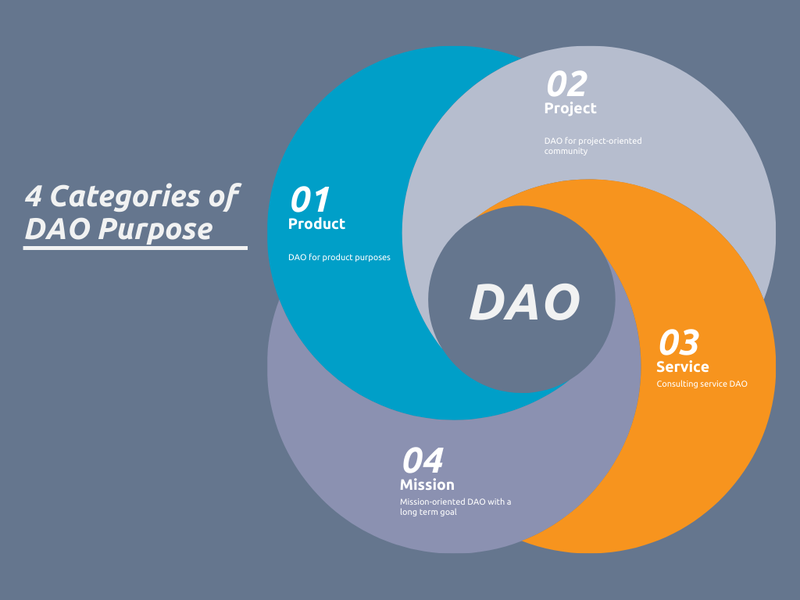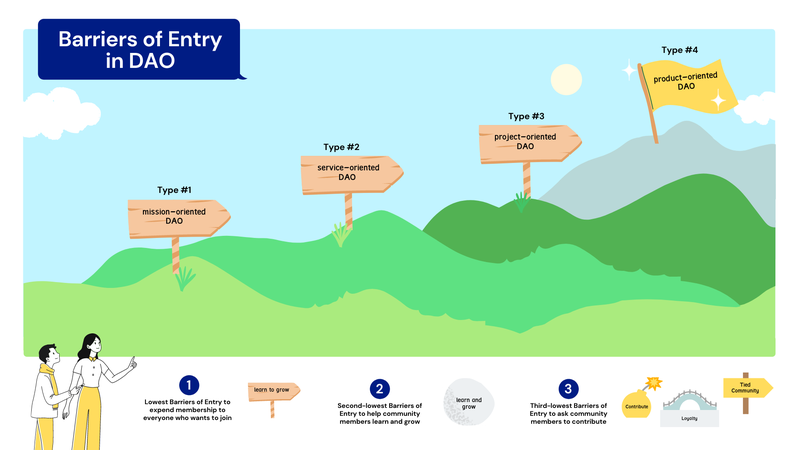
In part 8, let’s discuss Barriers to Entry in DAO.
TL;DR
I show 4 different categories of DAOs and each DAO with their level of Barriers of Entry.
Why Barriers to Entry

To design your DAO, you have to think about what goal your DAO wants to accomplish. There are 4 general categories to reach the goal through building a DAO: product, project, service, and mission. From these 4 general categories, one can decide barriers of entry to tailor down into DAOs.
Product
You can build a DAO for product purposes. It does not limit to physical products but to digital products like NFTs. The community you built is to serve products and expand its potential future. For example, NFTs can expand into Metaverse and become part of GameFi in the later stage.
Project
Building a project-oriented DAO can be another purpose to serve your community. The difference between product-oriented and project-oriented is product-oriented focuses on the product outcome but project-oriented focuses on continuous improvement. It means a product-oriented community may dissolve when a product is no longer needed, in contrast to a project-oriented community that community can create another project to work on.
Service
The third type is a service-oriented DAO. The community works together to provide a service and to resolve specific problems. Such service is not limited to existing products, projects but a broader sense of consulting purpose. It can be as small as helping other DAOs translate their materials to build websites for them. Or it can provide financial service to DAOs.
Mission
The fourth type is a mission-oriented DAO. The community has a mission that every member works together to achieve. It is a long-term goal that constantly drives the community to work together to accomplish. It may include product building, project building, service providing, or any other type that the mission wants to accomplish.
Barriers of Entry
Let’s go back to discussing Barriers of Entry.

For mission-oriented DAO, it has the lowest Barriers of Entry simply because you need more people to work toward the mission. It opens to everyone who wants to join to accomplish the mission. However, the more people join, the less likely everyone will stay and contribute.
For service-oriented DAO, it has the second-lowest Barriers of Entry because the community needs people to provide enough services. It does not necessarily have the skill to work on rather than learn from the processes and tasks.
For project-oriented DAO, it has the third-lowest Barriers of Entry because the community starts looking for specialists that can contribute immediately and help to grow. They look for solutions and contributions rather than having enough resources to train someone to be capable of doing the project.
For product-oriented DAO, it has the highest Barriers of Entry because the community needs loyalty from their members through monetary contributions or other potential artificial barriers to join such as a membership. They look for loyalty. Eventually, they want to have a community with supporting members.
In conclusion
It does not mean that categories and Barriers of Entry are exhausted here as the DAO is still evolving.
Follow me here
Photo by Matt Artz on Unsplash
Disclosure: The article was written by a delusional author who is possibly a nut job without any questions whatsoever about expertise in the subject matters. You should not believe any words this author wrote or you may experience similar symptoms or even possibly become a nut job.
Resource
Comments